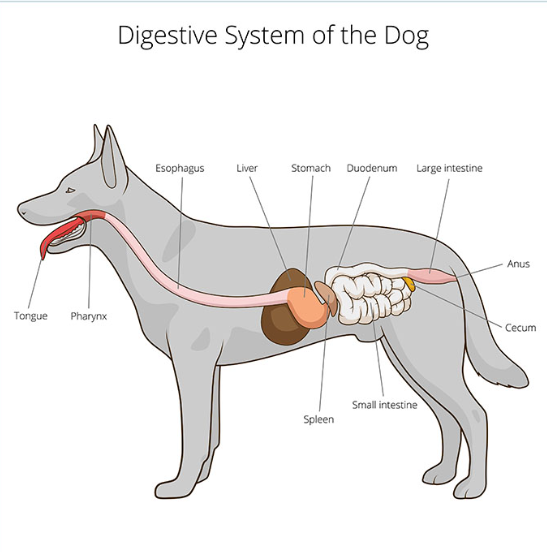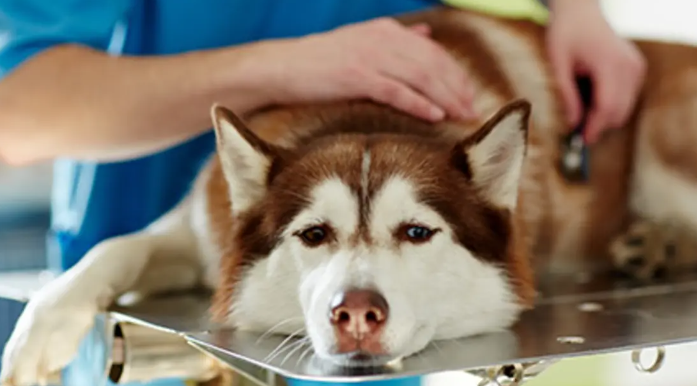Our Location
304 North Cardinal St.
Dorchester Center, MA 02124

Definition and Overview
Canine Distemper is a viral disease that affects dogs and other animals such as ferrets and raccoons. It impacts multiple body systems, including the respiratory, gastrointestinal, and central nervous systems, leading to a range of severe symptoms.
Relevance and Importance
Understanding Canine Distemper is crucial for dog owners as it is a highly contagious and often fatal disease. Awareness and prompt action can save your dog’s life.

What is Canine Distemper?
Canine Distemper is caused by the Canine Distemper Virus (CDV), a member of the Paramyxoviridae family. It is similar to the measles virus in humans and spreads quickly among unvaccinated dogs.
How Distemper Affects Dogs
The virus first attacks the respiratory system and then progresses to the gastrointestinal and central nervous systems. This progression can lead to severe and often deadly complications.

Respiratory Form
This form affects the dog’s lungs and airways, leading to symptoms such as coughing, nasal discharge, and difficulty breathing.

Gastrointestinal Form
The gastrointestinal form manifests as vomiting, diarrhea, and loss of appetite, which can lead to severe dehydration.

Neurological Form
In the later stages, the virus can cause neurological symptoms, including seizures, muscle twitching, and paralysis.
Early Signs to Watch For
Early detection is key to successful treatment. Initial symptoms include:
Severe Symptoms and Complications
As the disease progresses, more severe symptoms may appear, such as:
Chronic Symptoms
Survivors of Canine Distemper may suffer from chronic symptoms such as persistent neurological problems and respiratory issues.

How Dogs Contract the Virus
The virus spreads through direct contact with an infected animal or through airborne exposure. It can also be transmitted via contaminated food, water bowls, and surfaces.

High-Risk Environments
Shelters, kennels, and dog parks are high-risk environments for the spread of Distemper. Puppies and unvaccinated dogs are particularly vulnerable.

Dogs Most at Risk
Young puppies, unvaccinated dogs, and dogs with weakened immune systems are at the highest risk of contracting Canine Distemper.
Veterinary Testing Methods
Veterinarians use various diagnostic methods to confirm Distemper, including:
Importance of Early Diagnosis
Early diagnosis is crucial for effective treatment. If you suspect your dog has Distemper, seek veterinary care immediately.

Immediate Veterinary Care
There is no cure for the Distemper virus itself. Treatment focuses on supportive care to help the dog’s body fight the infection, including:
Supportive Treatments
Supportive care at home is also essential. Ensure your dog remains hydrated and comfortable, provide a quiet, stress-free environment, and administer prescribed medications.
Creating a Safe and Comfortable Environment
Isolate the infected dog to prevent the spread of the virus. Ensure their space is clean, warm, and comfortable. Limit their activity to prevent stress and exhaustion.
Nutrition and Hydration Tips
Keep the dog hydrated with small, frequent sips of water or electrolyte solutions. Once vomiting subsides, gradually reintroduce food with bland, easily digestible meals.

Vaccination Importance
The best defense against Distemper is vaccination. Puppies should receive a series of Distemper vaccinations starting at 6-8 weeks old, with boosters until they are about 16 weeks old, and then regularly as advised by your veterinarian.
Hygiene and Sanitation Practices
Regularly clean and disinfect areas where your dog spends time, especially if you have other pets or foster dogs. Use a bleach solution to kill the virus on surfaces.
Avoiding High-Risk Environments
Avoiding high-risk environments like dog parks, kennels, and shelters, especially for puppies and unvaccinated dogs, can significantly reduce the risk of Distemper.
Financial Costs
Treatment for Distemper can be expensive due to the need for intensive care. Costs can range from a few hundred to several thousand dollars, depending on the severity of the case and the length of hospitalization.
Emotional Strain on Owners
Caring for a dog with Distemper can be emotionally draining. The fear of losing a beloved pet, combined with the stress of intensive care, can take a toll on dog owners.
Financial Aid and Support
Many organizations offer financial assistance to pet owners struggling with veterinary bills. Research local and national resources that can help offset the costs.
Emotional Support for Owners
Support groups, both online and in local communities, can provide emotional support. Sharing experiences and advice with others who have faced similar challenges can be incredibly helpful.
Personal Accounts from Dog Owners
Many dog owners have successfully navigated Distemper’s challenges. For instance, Sarah’s dog, Buddy, was diagnosed with Distemper at 12 weeks old. After weeks of intensive care and supportive home treatments, Buddy made a full recovery. Sarah emphasizes the importance of early detection and not losing hope.
Lessons Learned and Shared
These success stories often highlight key lessons, such as the importance of vaccination, recognizing early symptoms, and seeking immediate veterinary care.

Tips from Veterinarians
Veterinarians recommend strict adherence to vaccination schedules and immediate isolation of infected dogs. They also advise maintaining good hygiene and monitoring for any signs of illness.
Best Practices for Prevention and Care
Implementing preventive measures, such as regular cleaning and avoiding high-risk environments, can significantly reduce the risk of Distemper. Ensuring proper nutrition and hydration also plays a crucial role in recovery and overall health.
Myths vs. Facts
There are several misconceptions about Distemper, such as the belief that only puppies can get the virus. In reality, while puppies are more susceptible, unvaccinated dogs of any age can contract Distemper.
Clarifying Misunderstandings
Another common myth is that indoor dogs are safe from Distemper. The virus can be brought into the home on shoes and clothing, making it essential to vaccinate and maintain hygiene practices.

Health Implications Post-Recovery
Survivors of Distemper may face long-term health issues, such as chronic respiratory problems or neurological damage. Regular veterinary check-ups are essential to monitor their health.
Monitoring and Care for Survivors
Dogs that recover from Distemper should receive regular health evaluations and a balanced diet to support their recovery and long-term health.
Finding Help and Support Groups
Support groups, both online and in local communities, can provide emotional and practical support for dog owners dealing with Distemper. Sharing experiences and advice can be incredibly beneficial.
Online Resources and Information
There are numerous online resources, including veterinary websites and forums, that offer valuable information on Distemper prevention, treatment, and care.
Canine Distemper is a serious threat to dogs, but with awareness, prompt veterinary care, and preventive measures, it is manageable. Understanding the symptoms, causes, and treatments can help you protect your furry friend and ensure their health and safety.

1. Can humans catch Distemper from dogs?
No, Canine Distemper does not infect humans. However, maintaining good hygiene is essential to prevent the spread of the virus among dogs.
2. How effective is the Distemper vaccine?
The Distemper vaccine is highly effective in preventing the disease. It is crucial to follow the recommended vaccination schedule for the best protection.
3. What should I do if I suspect my dog has Distemper?
If you suspect your dog has Distemper, seek immediate veterinary care. Early diagnosis and treatment are critical for a better prognosis.
4. Can older dogs get Distemper?
Yes, unvaccinated dogs of any age can contract Distemper. Older dogs with weakened immune systems are also at risk.
5. How long does it take for a dog to recover from Distemper?
Recovery time varies, but with prompt and proper treatment, most dogs start to improve within a few weeks. Full recovery can take several months, depending on the severity of the infection.